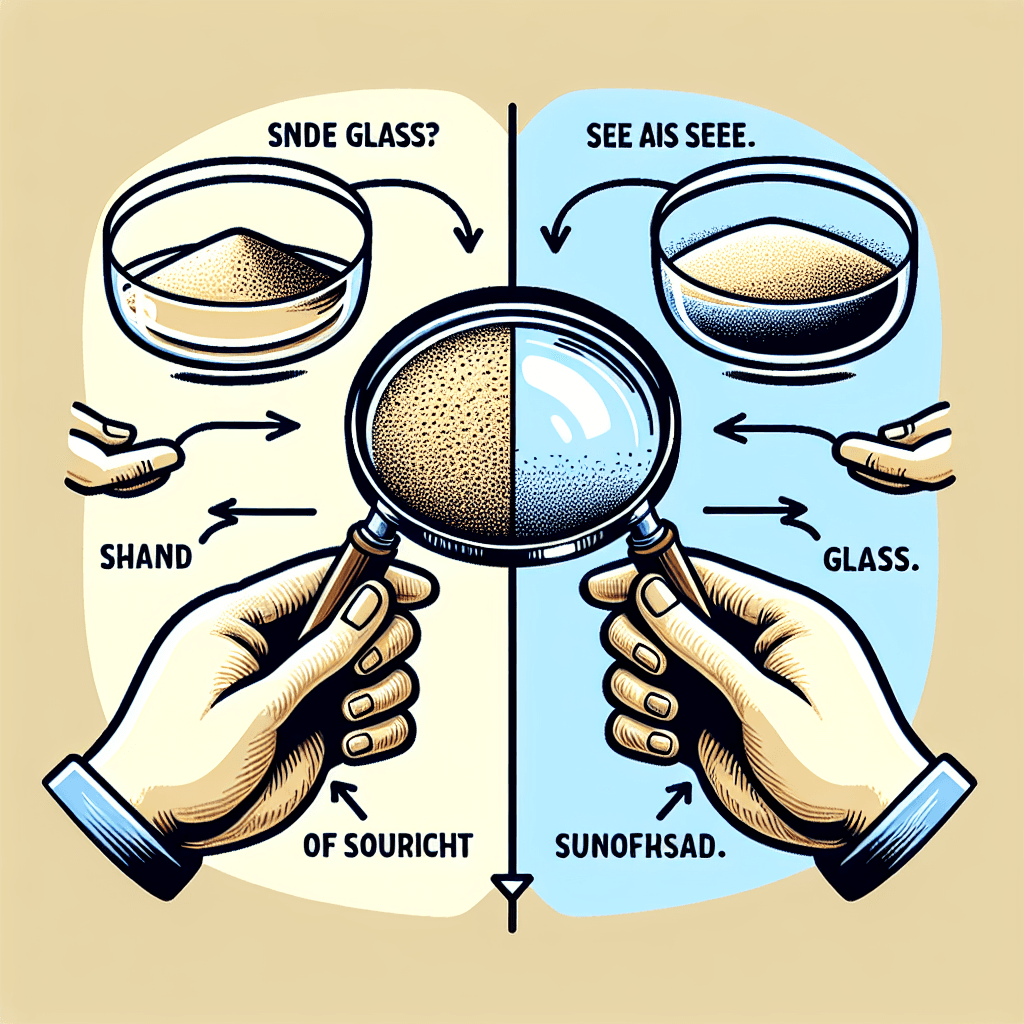Why can we see through glass but not the sand it's made from
It’s a mind-bending riddle of physics: discover the simple secret that allows light to pass through a window but not the very sand it was created from.


Too Long; Didn't Read
TLDR: Glass has a random, jumbled atomic structure that lets light pass straight through. Sand is made of countless tiny crystals, and the boundaries between them scatter the light in all directions, making the pile opaque.
Blog Post Title: The Crystal Clear Paradox: Why Can We See Through Glass But Not the Sand It's Made From?
It’s a contradiction we encounter daily. We peer through crystal-clear windows to watch the world go by, yet the very same core ingredient—sand—is the opaque foundation of our beaches and deserts. How can a material be transformed from something that completely blocks our vision into something we can barely tell is there? This fascinating question isn't magic; it's a beautiful demonstration of physics and chemistry at a microscopic level.
This blog post will unravel this everyday mystery. We will explore the journey from a single grain of sand to a flawless pane of glass, uncovering how a simple change in atomic structure is responsible for this remarkable transformation from opaque to transparent.
It All Starts with Sand: The Opaque Original
At its core, most common sand is made of silicon dioxide (SiO₂), also known as quartz. While a single, large quartz crystal can be quite clear, a pile of sand is anything but. The reason for its opacity lies in its structure. Sand is not one solid block; it's a massive collection of countless tiny, individual crystals.
Think of it like snow versus a solid block of ice. A clear ice cube allows light to pass through it in a straight line. But if you crush that ice into a pile of tiny shards or look at a blanket of snow (which is made of intricate ice crystals), it appears bright white and opaque.
Each grain of sand has a defined crystalline structure with many flat surfaces, or facets. When a beam of light hits a pile of sand:
- It strikes the surface of one grain and scatters.
- That scattered light then hits another grain and scatters again.
- This process repeats millions of times in a fraction of a second.
This chaotic scattering sends light bouncing in every possible direction, preventing any clear image from passing through. Instead of a direct path for light, we get a jumble of reflections, making the entire pile opaque.
The Magic of Melting: Forging Transparency
The transformation from opaque sand to transparent glass happens with intense heat. To make glass, sand is heated to an extreme temperature, typically around 1700°C (3090°F). At this point, the immense thermal energy overcomes the strong chemical bonds that hold the silicon and oxygen atoms in their rigid, ordered crystalline pattern. The sand melts, becoming a thick, molten liquid.
The key to transparency lies not just in the melting, but in how this molten liquid is cooled. If it were cooled very slowly, the atoms would have enough time and energy to rearrange themselves back into their preferred, orderly crystalline structure. We would essentially end up back where we started, with an opaque, crystalline solid. But that’s not how glass is made.
The Atomic Difference: Crystalline vs. Amorphous
The secret to glass's clarity is that it is cooled rapidly. This quick cooling process, known as quenching, freezes the atoms in place before they can realign into a neat crystal lattice. The result is what scientists call an amorphous solid.
Crystalline Structure (Sand)
In sand, atoms are arranged in a highly organized, repeating, long-range pattern. This order creates "grain boundaries"—the surfaces between the countless tiny crystals—that are the primary cause of light scattering.
Amorphous Structure (Glass)
In glass, the same silicon and oxygen atoms are locked in a disordered, random arrangement, much like the structure of a liquid. Because there is no repeating pattern, there are no grain boundaries. On a scale that matters to a photon of light, the material is uniform. Without these internal surfaces to bounce off, light can travel through the glass in a relatively straight line, allowing us to see through to the other side. The atoms are there, but their random arrangement is too small to significantly interfere with the wavelength of visible light.
Conclusion
The stunning difference between sand and glass is not one of chemistry, but of architecture. Both are made primarily of silicon dioxide, but their atoms are arranged in fundamentally different ways. Sand's opacity comes from its crystalline nature, where millions of tiny crystals scatter light in all directions. Glass's transparency is a product of its amorphous structure, a "frozen liquid" with a random atomic arrangement that lacks the internal boundaries to deflect light.
So, the next time you look through a pane of glass, appreciate the elegant physics you are witnessing. You’re seeing the remarkable outcome of taking an ordered, opaque material, melting it into chaos, and freezing it just right to create perfect, practical transparency.


